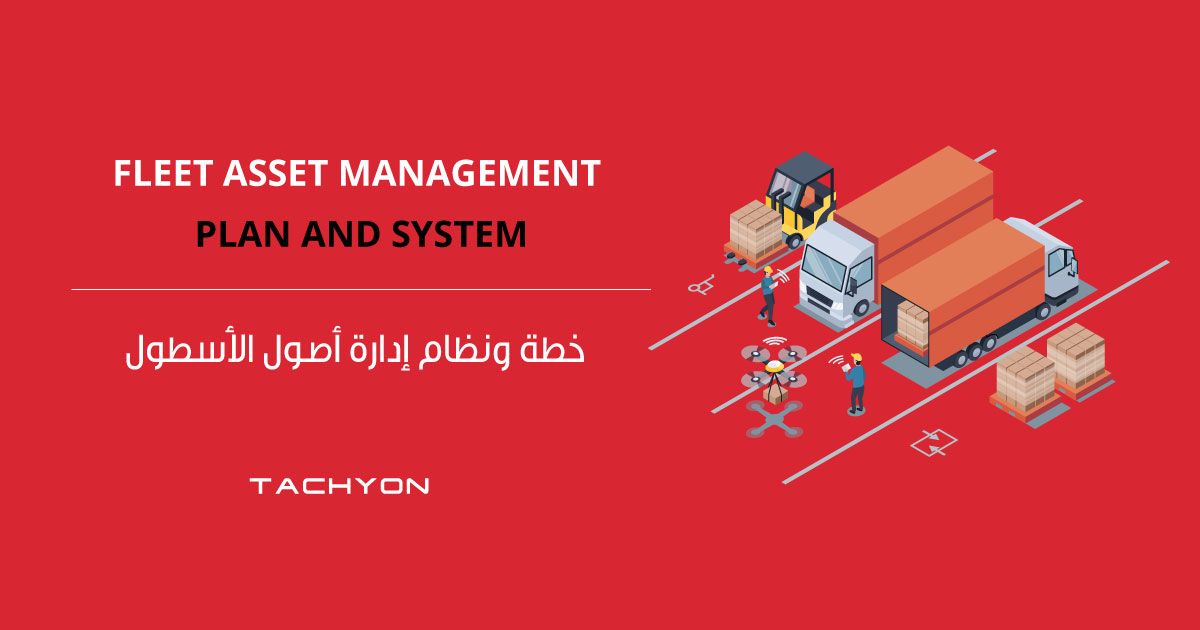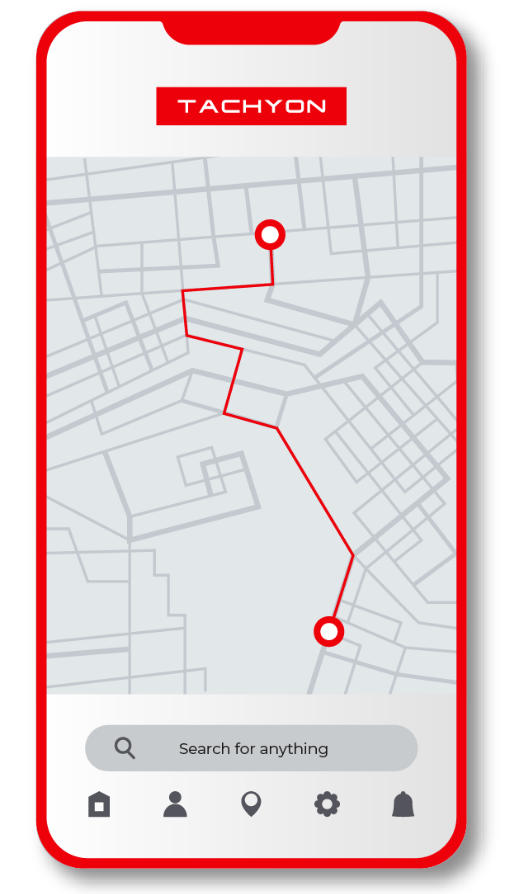- By Tachyon
- June 29, 2025
- TMS, Uncategorized
Managing a fleet is more than just keeping vehicles on the road. It involves tracking and maintaining every equipment to reduce costs and improve performance. Tachyon helps businesses take control with innovative solutions that simplify this process. A strong plan ensures vehicles are always ready, safe, and cost-effective. Without the right system, companies face rising expenses, downtime, and poor service. In this article, we’ll explore what fleet asset management is, why a clear plan matters, common challenges businesses face, and how the right tools can make a lasting difference. Let’s get started.
Fleet Asset Management is the process of tracking, maintaining, and improving the use of all equipment, such as trucks, trailers, and onboard devices. It helps businesses manage the whole life of each asset, from purchase to disposal. The goal is to reduce downtime; boost equipment uses and cut operating costs. This system gives managers clear insights into where the equipment is, their condition, and when they need service. Without a proper system, businesses often face delays, missed maintenance, and higher costs. Manual tracking can lead to errors and lost data. A strong approach helps avoid these issues and keeps the vehicle running smoothly. In short, it brings control, cost savings, and better performance to vehicle operations.
One smart way to help you run your operations safely, smartly and in a cost-effective way is through a Fleet Asset Management Plan. It gives a proper plan of action in which all phases are involved. Businesses can plan preventive maintenance with a good plan and prevent downtime fees that are caused by costly breakdowns. It also makes sure that vehicles meet all the regulatory and safety requirements. Budgets can be controlled more easily, cost forecasting gets simple, and unexpected costs can be reduced. An effective plan also reduces risks of theft, damage or misuse of equipment. Above all, it provides managers with correct data to make the right decisions at the right time. Through proper competence and organization, businesses enhance performance, minimize wastage and create a more sustainable operation.
Core Components of an Effective Fleet Asset Management Plan
Asset Inventory Management
The foundation of good fleet asset control is a complete and updated inventory. Better control over vehicles is possible through centralized records of all vehicles and equipment. All equipment should be labelled and classified to allow easy monitoring. Tachyon’s TMS enables managers to view and edit information in real time.
Maintenance Planning
Scheduled maintenance eliminates unwanted surprises. Tachyon’s TMS preventive maintenance schedules can be easily configured and monitored. It assists you in balancing between preventive and corrective maintenance procedures. Planned maintenance with automated reminders helps maintain equipment in perfect condition, contributing to excellence and vehicle life cycle.
Compliance and Documentation
Staying compliant with industry and legal standards is crucial. All vehicle documents, such as insurance, inspection, and licensing, must be up to date. Tachyon automates alerts for upcoming renewals, so nothing slips through the cracks. This helps protect the company from fines, downtime, or liability due to missed compliance deadlines or expired certifications.
Driver and Equipment Matching
Matching the right driver with the right vehicle ensures safety, efficiency, and accountability. Tachyon’s driver-vehicle assignment module makes this task quick and straightforward. Assigning based on skills, license type, or job requirements improves productivity and minimizes misuse. It also helps track driver behaviour and equipment’s performance more accurately through integrated reporting features.
Introducing Tachyon's TMS for Fleet Asset Management
Tachyon’s TMS is an effective solution which allows transport companies to manage their transport equipment easily. It organizes all your vehicles, drivers and operations on a single, smart platform. Real-time data tracking, downtime reduction, and smooth operation are all possible with Tachyon’s TMS. It can help you in planning better routes, keep track of fuel usage, and manage maintenance schedules in a proper manner. The ease of use of Tachyon’s TMS is what makes it special. The system also makes everything organized even when the operations are complex. Managers will be able to make decisions quicker, reduce expenses and ensure that their teams are constantly updated. In brief, Tachyon’s TMS ensures that you have complete power over your vehicle, and you can expand your business with ease. It is a convenient solution for corporations seeking to remain ahead in a competitive business environment.
Designing a Fleet Asset Management System: A Detailed Guide
Goals and Objectives Identification
Start laying out all your measurable targets that are part of your overall business plan. This can be either a 10 per cent reduction in fuel cost or two years increase in the life of a car. Goals offer a superior method to plan smart decisions during equipment’s supervision systems.
Stakeholder Involvement
Successful vehicle supervision involves the key stakeholders based on managers, drivers, finance, IT and procurement inputs. Early involvement of all stakeholders ensures a system will lead to trouble-free operations and fulfil all basic needs. Each of the stakeholders helps in improving the design of the systems and success in the long run.
Requirements of a System
Choose a system that is scalable and one that can keep up with your current and future needs. It should be capable of easy integration with ERP or accounting systems to help in data flow. The configuration options should suit your workflows and provide ease of use, reduce chances of errors, and ensure that the solution will grow with your operation.
Training and Change Management
To guarantee maximum use of your new system, invest in good training for all users. Develop better SOPs and user manuals, which help the teams to adopt new systems very easily. Adequate change supervision can create good faith and bring a hassle-free switch to smarter and technology-based operations.
Best Practices for Long-Term Fleet Asset Management
The best way to get maximum value out of your vehicle in the long run is to conduct audits and inspections regularly. They help in troubleshooting and make sure that everything is safely operated. AI Predictive analytics can reduce failures and improve performance. Always update your software to stay on top of the industry. Adopt a culture of constant upgrading because even minor adjustments may result in significant outcomes.
Consider working closely with original equipment manufacturers (OEMs) and reliable vendors so that your equipment is well-supported. Finally, think about the future and be sustainable. It can be seen in the replacement of gasoline vehicles with electric ones or the usage of cleaner fuel types. Making a green decision today can reduce expenses and risks in the future. Long-term optimization does not just suggest cost-cutting. Instead, it is an approach to create a smarter and stronger operation.
Common Challenges and How to Overcome Them
Managers sometimes must work with tight budgets and massive upfront expenditures, which can make it hard to make upgrades or new investments. Another major problem is not wanting to use digital tools or changes in the way work is done. Plus, dealing with too much data or insufficient data can make you feel even more overwhelmed. You might not have enough skilled workers to handle new systems or technology. You need to come across proper planning to handle these challenges in a better way. Start with phased adoption to keep expenses down and help people get used to the change. Involve the stakeholders early to take them on board and cut down on pushbacks. Work closely with vendors who can give you the training and fulfil all your needs. Organizations may get over these problems and set themselves up for long-term success by breaking huge goals down into smaller steps and making the team come first.
Future Trends in Fleet Asset Management
Fleet management is evolving rapidly due to the introduction of new technology and smarter planning. Machine learning and AI are essential platforms, providing real-time visibility to prevent issues before they occur. Self-driving cars are on the way and will change the whole scenario of vehicle supervision. The other macro trend is the shift towards e-cars. More and more companies are investing in eco-friendly vehicles and more sustainable solutions. Blockchain is also increasing to trace the parts and manage contracts with more trust and less fraud.
Connectivity to smart cities is increasing as well. Soon, vehicles will collaborate tightly with publicly owned infrastructure to improve routes, save fuel and decrease emissions. The trends do not simply involve technology, but they also seek to make the vehicle safer, more efficient, and environmentally friendlier. Those businesses that adopt these trends today will be part of a smarter, more connected future.
Conclusion
An effective fleet asset management system offers excellent supervision control, reduces expenses and achieves greater performance. By having the right system, the businesses can easily cut down on the downtime and make wiser decisions. Hence, it is a good idea to be proactive in vehicle supervision. Tachyon guides businesses throughout their journey and allows them to maintain their vehicle more easily, intelligently, and profitably.
Frequently Asked Questions
In what ways does it minimize operation costs?
It facilitates more effective maintenance planning, less fuel wastage and enhances usage to minimize costs.
Is it beneficial to small businesses?
The answer is yes! Even small vehicles can benefit with performance, compliance and cost savings with scaled-down versions of these systems.
Does asset management include GPS tracking?
Yes, GPS and telematics are significant features that will give real-time information to make wiser decisions.
What is the average ROI of such system implementation?
ROI is often observed within 12-24 months by businesses with less downtime, improved planning, and controlling costs.





